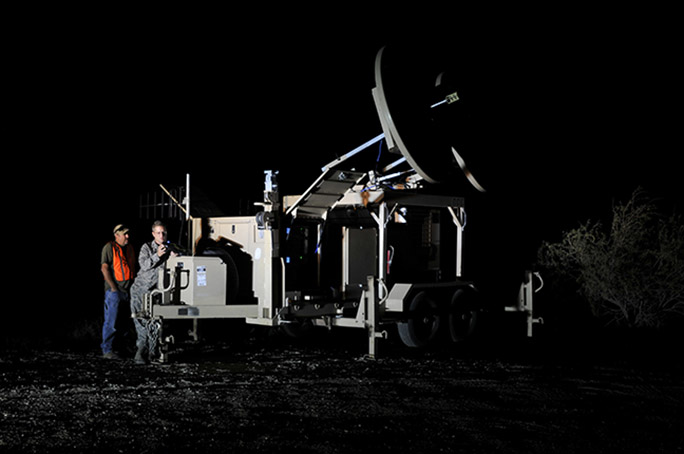Navigating the globe was once done using the sun, moon and stars as references, but modern times bring modern methods, and the majority of the world now relies on GPS — or another GNSS — for its navigation needs.
But what happens when GPS isn’t available?
A collection of Department of Defense (DoD) units and U.S. universities recently found out when they gathered at Edwards Air Force Base to evaluate various aerial platforms in a degraded GPS environment.
Navigating the globe was once done using the sun, moon and stars as references, but modern times bring modern methods, and the majority of the world now relies on GPS — or another GNSS — for its navigation needs.
But what happens when GPS isn’t available?
A collection of Department of Defense (DoD) units and U.S. universities recently found out when they gathered at Edwards Air Force Base to evaluate various aerial platforms in a degraded GPS environment.
The week-long test event called DT NAVFEST – short for Developmental Test Navigation Festival – was the first large-scale program of its kind, according to James Cook, KC-46A project manager with the 418th Flight Test Squadron.
“DT NAVFEST was established to provide a locally, more realistic GPS jamming environment in which aircraft platforms and (remotely piloted aircraft) could evaluate their performance under a degraded GPS signal,” Cook said. “Other locations around the U.S. provide such environments, but having it locally allowed for direct program input and cost savings to customers by not having to deal with the logistics costs of deploying to those locations.”
Cole Johnson, technical lead for NAVFEST, explained how they create a degraded GPS environment.
“GPS signals are super faint,” he said. “Imagine a 30-watt lightbulb 12,000 miles in space. So, it doesn’t take much interference for your smartphone’s GPS to lose lock on such a low power signal. Interference could occur from walking in a dense forest, through a canyon, inside a building, driving among skyscrapers, or from GPS jammers. The end effects of GPS jammers aren’t much different than the other causes of interference, they all make it harder for your GPS receiver to pick out faint GPS signals from the air, except jammers do it by adding noise to the environment.”
Units that tested assets at Edwards AFB included the Emerging Technologies Combined Test Force, the 411th, 416th, 419th and 461st Flight Test Squadrons. Two universities – Stanford University and the University of Illinois – and the U.S. Army’s Special Operations Command.
The GPS jammers and support came from the 746th Test Squadron at Holloman AFB, New Mexico.
According to Wei Lee, test safety engineer with the 412th Test Wing, the universities were invited to participate in DT NAVFEST on a trial basis with the hope of expanding to other institutions in the future.
“Live GPS jamming data is extremely difficult for academic labs to obtain due to the complexity of working with the Federal Aviation Administration and regional first responders,” Lee said. “It is crucial that the Department of Defense support basic research and development that is ongoing in our nation’s top academic institutions. Many of the low technology readiness-level projects will eventually migrate from academic labs to defense industry and military applications. Allowing the labs to participate on a non-interference basis is a win-win situation.”
To minimize the effect on the local community and air traffic, planning of the GPS jamming was initiated months in advance. According to Johnson, the GPS jammers had a vertical reach in upwards of 30,000 feet, so the first step was contacting the FAA, which provided a list of "green" times when commercial air traffic was at its lowest. This led to the testing being performed between 1 and 6 a.m.
Johnson said the team performed extensive modeling and simulation to identify how far the GPS interference would reach. The models suggested a small part of the Antelope Valley – a couple of small towns around Edwards AFB – could be affected.
“We wanted to error on the side of caution, so we constructed a huge list of emergency services from the Antelope Valley to contact,” Johnson said.
The team also set up phone lines so the FAA and any emergency service could call up during testing and request the jammers to be turned off.
Cook said the event was extremely successful, judging by the feedback from customers.
“For a first-of-its-kind event, it executed fairly smoothly, thanks to the test team and customers’ direct involvement,” he said. “The technical knowledge and support from the 746th TS was awesome. And the support given to this program from 412th Test Wing all the way down to the Airman on the ground providing direct support.”
(This U.S. Air Force article was written by Christopher Ball, 412th Test Wing Public Affairs.)






